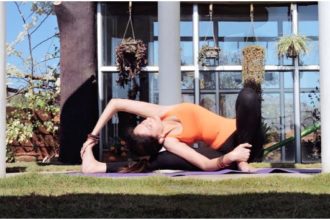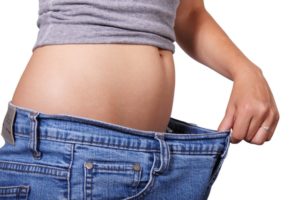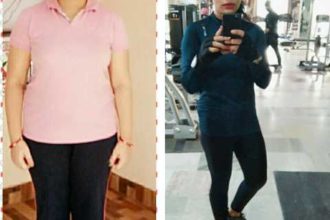Can you lift heavy weights but not touch your toes? Don’t worry, you are not the only one. There are many athletes who push their muscles to the limit without balancing the strength with stretching. Yoga is a great solution for the entire flexibility problem. Don’t take your tired, tight, and aching back to bed thinking you need rest to get better. People are often mistaken that resting up will cure everything on its own. Luckily yoga stretches are a perfect solution for a stiff back.
Philterkilter Tips: Concentrate on your breathing. Breathe deep! Hang in there! Focus on the activity you are doing. Use your brain to your benefit by concentrating on the muscles.
My coach often jokes about regarding my flexibility and asks if I had rubber in my pre-workout drink. I practice yoga stretches regularly and have achieved the flexibility over the period and the following seven stretches are my personal favourites. Keep Practicing!!
Bridge Pose or Setu Bandha Sarvangasana
This is very simple, yet useful. It can be practiced by experienced practitioners and beginners as well.
Say-tuh-bun-Dhahs-ana
Setu =bridge, Bandha = bind, lock, Asana = Posture
This pose helps in maintaining a good nervous system and makes the spine flexible. By practicing this posture one can enjoy both emotional and physical benefits and it will also help you prepare for more advanced back bending exercises.
Technique:
Place a mat on the floor and lie-down on your back. Slowly bend your knees and get the feet closure to your butt. With the hip width apart place your feet on the mat.
Get your palms aligned with your hips facing downwards. Lie down in a supine position facing towards the roof with a stretched neck.
Benefits:
- Stretching exercise for hips, neck, spine, and chest strengthens the spinal muscles, hamstrings, buttocks and back muscles.
- This pose helps in controlling the central nervous system, and acts as a remedy to depression.
- It enhances digestive system and stimulates abdominal organs.
- It gives relief to women suffering from menopausal symptoms.
- The back-bend poses help reduce headache and back pain.
- Doing the pose before going to bed can get you some sleep at night, even if you have insomnia.
- Like many other poses, it also improves your blood circulation.
- It may be beneficial in curing hypertension, clogged sinus, asthma and osteoporosis.
- It gives work to quads, hamstrings and calves.
- It provides relief against abdominal cramps.
- This exercise will help in healing the prolapsed uterus, and it also controls the menstrual flow.
Precautions:
These exercises should not be performed in case of neck or knee injury.
Never try this pose during pregnancy.
It is always recommended to perform under the guidance of a trainer.
Please consult a doctor in-case of injury or back pain.
Cat pose or Marjaryasana
This is one of the most widely known and commonly performed poses in the world. Cat pose is considered to be one of the most effective yoga poses when it comes to correcting posture.
Marjari Asana
Marjari = cat, asana = pose
Technique:
Get down on all fours with your palms and knees on the floor and the back straightened out, forming a table top. Keep your knees right below the hips. Straighten your arms, so that the wrist, elbow and shoulder are in one straight line. Keep your head in the center. Do not let the head hang down. Fix your gaze on the floor. Inhale, exhale and then raise your spine so that it forms an arc. Make sure your knees and shoulders are in position. Bring your head down. Inhale and bring the spine down to assume table top position. Repeat 10- 12 times.
Benefits:
- Increases the mobility of your vertebrae.
- Releases tension in your cervical, thoracic, and lumbar spine.
- Strengthens and tones your arms and abdominal muscles.
- Stretches your back muscles and abdominal muscles as well as your neck.
- Increases circulation of the spinal fluid and massages your digestive organs.
- Teaches correct pelvic movements for forwards bends and back bends.
Precautions:
Those with neck injuries should keep the head in line with the torso, not dropping it forward or back. Pregnant women and those with back injuries should only perform Cow Pose, bringing the spine back to neutral between poses — do not let the belly drop between repetitions, as this can strain the lower back. Always work within your own range of limits and abilities. If you have any medical concerns, talk with your doctor before practicing yoga.
Cobra Pose or Bhujangasana
This is an invigorating backbend that was named such because Bhujangasana reflects the posture of a cobra that has its hood raised.
boo-jang-GAHS-anna
Bhujanga= snake, asana= posture
Technique:
Lie on your belly, with the chin on the floor, palms flat on the floor under the shoulders and legs together. Pull up the knee caps, squeeze the thighs and buttocks, engage mula bandha, and press the pubic bone down into the floor. Without using the arms, inhale and lift the head and chest off of the floor, keeping the neck in line with the spine. With the elbows close to your sides, press down into the palms and use the arms to lift you up even higher. Drop the shoulders down and back and press the chest forward. Keep the legs, buttocks, and mula bandha strong, and keep the pubic bone pressing down into the floor. Breathe and hold for 2-6 breaths. To release: exhale and slowly lower the chest and head to the floor. Turn the head to one side and rest, rock the hips from side to side to release any tension in the low back.
Benefits
- Stretches muscles in the shoulders, chest and abdominal region
- Decreases stiffness of the lower back
- Strengthens the arms and shoulders
- Increases flexibility
- Improves menstrual irregularities
- Elevates mood
- Firms and tones the buttocks
- Invigorates the heart
- Stimulates organs in the abdomen, like the kidneys
- Relieves stress and fatigue
- Opens the chest and helps to clear the passages of the heart and lungs
- Improves circulation of blood and oxygen, especially throughout the spinal and pelvic regions
- Improves digestion
- Strengthens the spine
- Soothes sciatica
- Helps to ease symptoms of asthma
Precautions:
Should not be practiced by those with severe problems of the spine, stomach ulcers, hernias or pregnant women.
It should be practiced with care for those with stiff backs and for those who are menstruating. Also not recommended for people with heart diseases. Should not be practiced by those who have undergone surgeries of spine, brain, abdomen, heart and lungs.
King Cobra Or Raja Bhujangasana
This is an advanced pose which should be practiced after cobra pose.
raja boo-jang-GAHS-anna
Raja = King, Bhujanga = snake, Asana = Pose
Technique:
Once you are proficient in the above steps, you can attempt some variations. In the cobra, turn your head to look over your right shoulder, trying to see your left heel. Hold for about 10 seconds, then return your head to the center and repeat while looking over the other shoulder. From the starting position, lift your hands off the ground and roll your body up using only your back muscles. Always return to a resting position on your abdomen after these poses. With practice you may be able to attempt the “King cobra” variation in which your feet touch your head.
Benefits
- Strengthens the spine
- Tones the deep and superficial muscles of the back
- Stretches chest and lungs, shoulders, and abdomen
- Stimulates abdominal organs
- Opens the heart and lungs
- Soothes sciatica
- Combats constipation
- Tones the ovaries and uterus and alleviates menstrual problems
Precaution:
The person who is suffering from peptic ulcers, hernia, intestinal tuberculosis, and hypothyroidism shouldn’t practice this asana. If you have other serious problems, it is better to consult a Yoga therapist or expert before performing bhujnagasana. One having abdominal injuries should also avoid doing this. The patients of sciatica, slip-disc and ulcerative colitis should take extra precautions. It also shouldn’t be performed during pregnancy.
Cow Pose or Bitilasana
This is important for good posture and it is often practiced with cat pose.
bee-tee-LAHS-uh-nuh
Bitila = Cow, Asana = Posture
Technique:
Start on all fours, bringing the wrists underneath the shoulders and the knees underneath the hips. Think of the spine as a straight line connecting the shoulders to the hips. Try visualizing the line extending forward through the crown of the head and backwards through the tail bone. This is the position of a neutral spine. Keep the neck long, as the natural extension of the spine.
Benefits
- Improves posture and balance
- Strengthens and stretches the spine and neck
- Stretches the hips, abdomen and back
- Increases coordination
- Massages and stimulates organs in the belly, like the kidneys and adrenal glands
- Creates emotional balance
- Relieves stress and calms the mind
Precautions:
Those with neck injuries should keep the head in line with the torso, not dropping it forward or back. Pregnant women and those with back injuries should only perform Cow Pose, bringing the spine back to neutral between poses — do not let the belly drop between repetitions, as this can strain the lower back. Always work within your own range of limits and abilities. If you have any medical concerns, talk with your doctor before practicing yoga.
Wheel pose or Chakrasana
As the body takes an almost wheel-like, semi-circular posture while performing this asana. The asana also has a keen resemblance to the back bends done in gymnastics.
Technique
Begin by lying down on your back with feet apart. Now bend the knees and place your feet flat on the ground closer to your buttocks. Bring your palms under your shoulders such that the fingers point towards the shoulders and the elbows are shoulder width apart. Now inhale and press your palms firmly into the floor. Lift your shoulders and head off the floor by straightening your arms. The feet should be pressed firmly into the floor. Inhale and lift your hips up. The spine should be rolled up so that it may seem to resemble a semi-circular arch or wheel. Straighten out your arms and legs as much as possible so that the hips and chest may be pushed up. Hold this pose for at least 15-30 seconds. To go back to the original, bend your elbows to lower your head and shoulders to the floor. Then bend your knees and bring your spine and hips back to the ground. Remember to relax a lot after doing this pose.
Benefits
- Strengthens the liver, pancreas and kidneys
- Strengthens the muscles of the hands and feet
- Increases elasticity of the spinal cord
- Excellent for the heart
- Strengthens the vertebral column and increases the oxygen in-take capacity
- Beneficial for your cardiovascular, glandular and nervous systems health
- Prevents respiratory disorders and relieves stiffness of joints, back, shoulder and the thoracic cage
- Recommended for anyone suffering digestive or respiratory disorders
- Very useful in treating diabetes, asthma, constipation and obesity
- Has a positive effect on hormonal secretions
Precautions:
Do not exert excessive force, which may cause undue strain onto the arms while lifting the body up into the position. Force yourself into getting the arch in the spine. Strain and tense up the body while moving into the pose and/or while doing the pose. People who suffer from serious spinal column ailments, such as cervical and lumbar spondylitis should avoid doing this pose. If there is not much spine flexibility at the beginning, one should not force or push the body into doing the pose.
Camel Pose or Ustrasana
An intermediate level back-bending yoga posture known to open Anahata (Heart chakra). This yoga posture adds flexibility and strength to the body and also helps in improving digestion.
oosh-TRAHS-anna
Ustra = Camel, asana = posture or pose
Technique:
Kneel on the yoga mat and place your hands on the hips. Your knees should be in line with the shoulders and the sole of your feet should be facing the ceiling. As you inhale, draw in your tail-bone towards the pubis as if being pulled from the navel. Simultaneously, arch your back and slide your palms over your feet till the arms are straight. Do not strain or flex your neck but keep it in a neutral position. Stay in this posture for a couple of breaths. Breathe out and slowly come back to the initial pose. Withdraw your hands and bring them back to your hips as you straighten up.
Benefits:
- Opens the belly, chest, heart, shoulders and upper back.
- Stretches the whole front of the body including ankles, thighs and groin.
- Strengthens the legs and back.
- Improves your posture.
- Stimulates the organs in the belly.
- Energizes body and mind.
Precautions:
The camel pose is an advanced pose, it requires a bit of conditioning before you attempt it.
Still having a second thought on whether you can do any of these poses? Well! there is only one way to find out- so start trying now! If I can do it so can you.
This article first appeared on PhilterKilter.com
Model : Rashmi Yeole















With thanks! Valuable information!
Thanks!
Me like, will read more. Thanks!